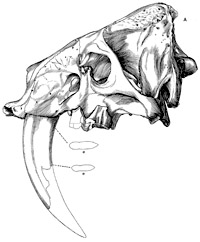Museum, University of Nebraska State
Date of this Version
3-1985
Document Type
Article
Citation
BULLETIN OF The University of Nebraska State Museum, VOLUME 11, NUMBER 1, MARCH,1985. Pg. 1-81, Tables 1-20, Figs. 1-27
Abstract
Thirteen species of crinoids representing the families Diphuicrinidae, catacrinidae, Pirasocrinidae, Erisocrinidae, Cromyocrinidae, Cymbiocrinidae, Scytalocrinidae, and Ampelocrinidae have been collected from the Stull Shale Member of the Kanwaka Formation in the Shawnee Group of the Virgil Series (Upper Pennsylvanian) from near Weeping Water and Plattsmouth, Nebraska, and near Pacific Junction, Iowa. Exposures of the Stull Shale near Melvern, Kansas, have yielded 14 species of crinoids representing the families Diphuicrinidae, Catacrinidae, Pirasocrinidae, Lophocrinidae Allagecrinidae, Cymbiocrinidae, Erisocrinidae, Apographiocrinidae, and Stellarocrinidae. All but two of the species present in the Stull Shale have been previously reported from other stratigraphic horizons, including the Vinland Shale in Kansas, the lola and Winterset Limestones in Kansas, the Plattsburg, Oread, and Lecompton Formations of Nebraska and Iowa, the Kanawa Formation of Oklahoma, the Harpersville, Brad, and Mineral Wells Formations of Texas.
Differences in the Stull crinoid faunas between Kansas and Nebraska, as well as differences in associated faunas, indicate that two separate fossil assemblages having few species in common are being studied, although both assemblages are typical of the crinoids in the nearshore shale of a cyclothem. The Kansas assemblage may represent crinoids of a deltaic biofacies, and the Nebraska-Iowa assemblage may represent a biofacies less influenced by detritus and farther away from the source area. Nearshore shales of midcontinent cyclothems, as described by Heckel and Baesemann (1975) and Heckel (1977), are shown to contain a different crinoid and total macro invertebrate assemblage than do the offshore deposits of the same cyclothem.
Nearshore shales contain large, ornate crinoid species and macroinvertebrates, whereas the transgressive limestones and offshore shales contain small, inornate species of crinoids and associated macroinvertebrates. These crinoid assemblages formerly were termed "Type I" and "Type II" by Pabian and Strimple (1970) but are here referred to as shallow water or nearshore and deep water or offshore assemblages respectively.
Parallelism is demonstrated for the species Graffhamicrinus decapodos (Strimple and Priest) and Delocrinus vulgatus Moore and Plummer. Three species, Delocrinus vulgatus Moore and Plummer, Graffhamicrinus subcoronatus (Moore and Plummer) and Graffhamicrinus magnificus (Strimple) are morphologically but not biometrically separable.
Oklahomacrinus Moore, 1939, is restricted to include only those forms with cups having basal planes formed by the medial portion of the basal plates. Adacrinus Pabian and Strimple, n.g., Sardinocrinus Pabian and Strimple, n.g., and Kansacrinus Pabian and Strimple n.g., are erected to include other species formerly assigned to unrestricted Oklahomacrinus but now excluded from restricted Oklahomacrinus.
Hydriocrinus acehillensis Pabian and Strimple, n. sp., is described from the Stull Shale of Nebraska.
Included in
Entomology Commons, Geology Commons, Geomorphology Commons, Other Ecology and Evolutionary Biology Commons, Paleobiology Commons, Paleontology Commons, Sedimentology Commons


Comments
Copyright © 1985 by the Board of Regents of the University of Nebraska